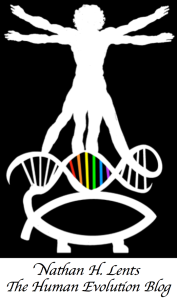The fields of animal cognition and ethology (the study of animal behavior in wild, natural settings) have produced extremely exciting results over the last two decades. Gone are the days when any serious scientist of animal behavior considers their subjects as nothing more than mindless automatons. We are slowly realizing how perceptive and intelligent other animals are.
This is especially true for dogs. They have a sense of number, they have incredible memories, they recognize and reject unequal treatment, and they have rich toolkit of social cues. They are especially attuned to human emotion and communication, having evolved alongside us for thousands of years.

A new study conducted by scientists at the University of Vienna has demonstrated that dogs have an understanding of perspective. (Read it – it’s open access!) That is to say, dogs are aware that individuals can have different points-of-view and can observe things or not, based on where they are. (We are talking about literal points-of-view here, visual perspectives, not figurative ones.) The understanding of perspective is a very advanced cognitive skill. In human terms, this would be considered level-1 perspective-taking and is not observed in human children until at least the third year of life, often even later.
This study built on similar research from 2014, but went further. To ask if dog’s understand perspective, Huber and colleagues trained dogs on a simple task of “finding the treat,” a piece of sausage hidden under a bucket, using only cues from the “informant” pointing to which bucket had the treat inside. (To prevent the dogs’ simply finding the food with their powerful noses, all of the buckets were touched by the scientists and rubbed with the sausage.)

It sounds simple, but studies like this must include a great deal of careful controls. The trials must be repeated over and over, with different scientists playing the various parts of informants and “hiders,” lots of foils and build up to the “real test” so that the dogs understand the setup and what the humans are telling them when they point to a bucket.
It’s worth stopping here to note that dogs are the only animals besides our fellow apes that know (or can learn) what we mean when we point at something. They can follow our fingers and understand that we’re drawing attention to something some distance away. Dogs can even follow our line of sight, a skill called “gaze tracking.” When we look at something, especially while expressing some strong emotion such as fear, surprise, or elation, this will pique the interest of our dogs and they will attempt to see what we’re looking at. This is something that very few non-ape species can do in a sophisticated way. To me, this was a strong hint that they understand perspective, but could also be the result of training.

Nevertheless, in this study, the scientists built up to an elaborate experiment in which several buckets were lined up and a sausage was hidden in one of them. Although the dog was present in the room while the sausage was hidden, an opaque screen was raised preventing the dog from seeing which bucket was given the sausage. However, two “informants” were on the other side of the screen, able to view the hiding of the sausage.
The trick was that, for each trial, the informants were turned around in different directions so that one of them, the “knower,” was facing toward the buckets and thus able to see, while the other, the “guesser,” was turned away from the buckets and thus unable to see where the sausage went. Then, the two informants pointed to different buckets, the “knower” pointing to the correct bucket and the “guesser” pointing to an incorrect bucket.
Here’s a picture of a real trial when a dog is about to make a choice as to which bucket she thinks has the sausage:

In this scenario, the dog must “decide” who to believe. In the trials leading up to this, the informants were always knowers: they could see where the sausage was hidden and they always told the truth. The dogs learned to trust the informants and to know that their pointing revealed the location of the sausage. In this new twist, however, they had to make a choice – whose pointing was correct?
In 70% of trials, the dogs went for the bucket indicated by the “knower.” That’s much more than chance and reveals that the dogs had some sense that, by turning away from the action, the “guesser” had less information and was therefore less reliable. Trials were repeated over and over and the identities of hiders, knowers, and guessers were flipped around to prevent (or at least reveal if) the dogs’ cueing in on individual, rather than the issue of perspective. No variable deviated from random chance except the variable of perspective.
The dogs had the budding cognitive ability to understand that when the informant is looking away, she is not in a position to observe the crucial moment when the sausage is hidden. Another way to say this is that the dogs have a natural sense of what the two informants know and don’t know. The guesser can’t know for sure where the sausage is, but the knower can.
This hints that dogs have some simple awareness of the mental contents of other individuals. That may sound simple, but it is a key element of metacognition (awareness of one’s mental contents, or “thinking about thinking.) and “theory of mind,” the understanding that others have a mind and experiences that are different than one’s own.

Perspective-taking is also related to another related cognitive skill: empathy. The notion of appreciating the experiences of others begins with the visual perspective, being able to mentally place one’s self in another’s position and ascertain what they can and can’t see. As mentioned above, this is level-1 perspective-taking and the evidence now argues that dogs are capable of it. (As mentioned, the Vienna study builds on a similar study by researchers in New Zealand. In that study, the “guessers” weren’t in the room, while in this study, their perspective was limited in a more subtle way, by turning them. Both gave the same result.)
While it can be argued that dogs are a unique case because of how sensitive they are to emotional and communicative cues from humans, this misses the most important point. Two humans were both giving cues. The dogs had to decide between them. To do that, they had to be aware of, then compare, what the two humans might know. By definition, this meets at least the basic criteria of “theory of mind.”
Clearly, dogs have a lot more intuitive understanding than we previously thought.
-NHL

Ok…first of all, DUH. Anyone that owns a dog and has developed a relationship with them knows the dog has these abilities already. The experiment is flawed. Just because the buckets were touched with sausages does not fool the dog. The stronger scent will emanate from the bucket with the highest quantity of sausage material under it. In nature, this would be an essential distinction or animals would be forever wasting time looking in the wrong places for a scent instead of the substance! I taught middle school special ed. Science for years and even my students could see the flaw in this study!
LikeLike
I appreciate your interest and willingness to engage in discussion, but both of your concerns are ill-founded. As for the latter point – I encourage you to read the paper. It is open-access. They addressed that concern thoroughly. I didn’t explain it, but they thoroughly smeared sausages on all the buckets, but more importantly, they did control experiments where they tried to trick the dogs and see if they followed their noses instead of the direction. (It’s also worth nothing that the way that odorant molecules vaporize means that a large smear can actually smell stronger, at least at first, than a large chunk. It’s the surface area that’s important, not the volume of material.) The point is that the dogs most definitely could not use smell to find the sausage – they made quite sure of that and set the experiment up to reveal it if not.
As for your first point, I don’t know any scientist that would ever talk that way. “Duh, we know that, it’s obvious.” This is because we all can recite a litany of examples from our own fields of things that people thought were obvious but then didn’t hold up in studies. Animal behavior is notorious for this, especially with companion animals. Because they are so attuned to human emotion and nonverbal communication, they can appear to have an incredible amount of awareness. (Look up the Clever Hans effect – it fooled millions!) As this paper even discussed, dogs have failed the test for perspective-taking in previous studies. Science often sets out to study things that non-scientists think are pointless or obvious only to discover upon careful examination that the reality is different than the common perception.
LikeLiked by 2 people